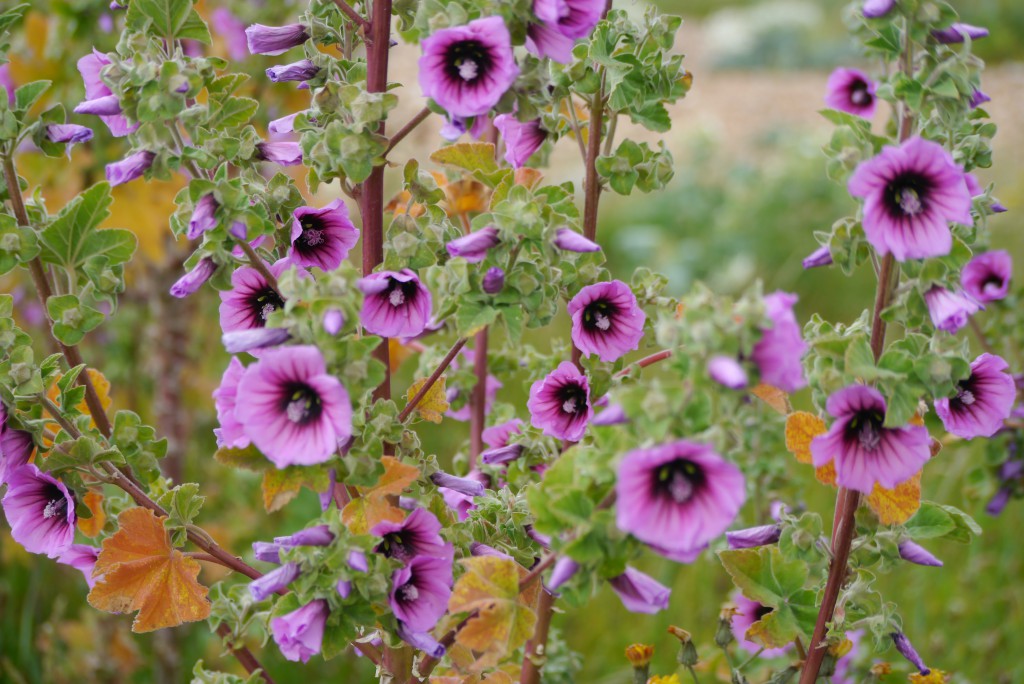Plants on our local nature reserve – Tree Mallow
Tree mallow Lavatera arborea (sometimes known as Malva arborea, or, more recently as Malva eriocalyx), is a species of mallow native to the British Isles south. It tolerates sea water to varying degrees, at up to 100% sea water in its natural habitat, excreting salt through glands on its leaves.

The leaves of the species are used in herbal medicine to treat sprains, by steeping them in hot water and applying the poultice to the affected area. It is theorised that lighthouse keepers may have spread the plant to some British islands for use as a poultice and to treat burns, an occupational hazard. It is thought to have been used as an alternative to toilet paper. The seeds are edible and are known in Jersey as “petit pains”, or “little breads”.
…it tolerates sea water to varying degrees, at up to 100% sea water in its natural habitat, excreting salt through glands on its leaves.
One of Britain’s best known seabirds, the puffin, is being forced out of a number of Scottish seabird island colonies by dense stands of tree mallow, growing up to 3 metres tall, and choking puffin breeding sites. It is feared that the plant could soon start affecting other coastal breeding birds such as cormorant, eider duck, herring gull and fulmar. Whilst present in confined places for several hundreds of years, the plant has suddenly become invasive, taking over island ecosystems and thereby suppressing ground breeding birds and native vegetation.
Understanding why plants can be invasive in one place whilst not in another has become essential. Experiments are underway to determine the reasons for this plant becoming invasive.
This is happening in a small way on the LNR. So we removed some seedlings before lockdown in one area as advised by Ecologist Kate Ryland. The reasons for this rapid expansion may be milder winters and an increase in manure rich soil. Understanding why plants can be invasive in one place whilst not in another has become essential. Experiments are underway to determine the reasons for this plant becoming invasive.
